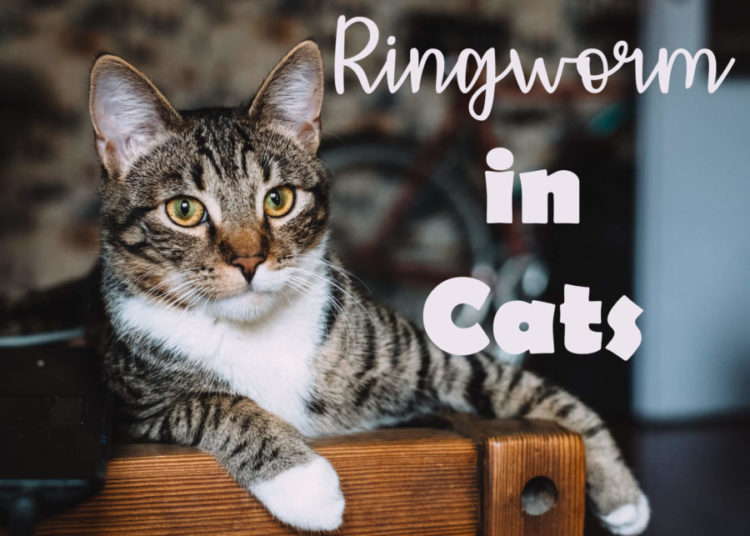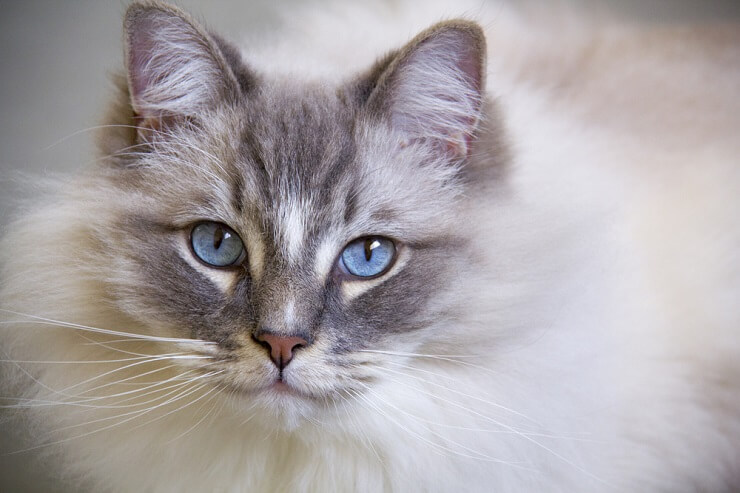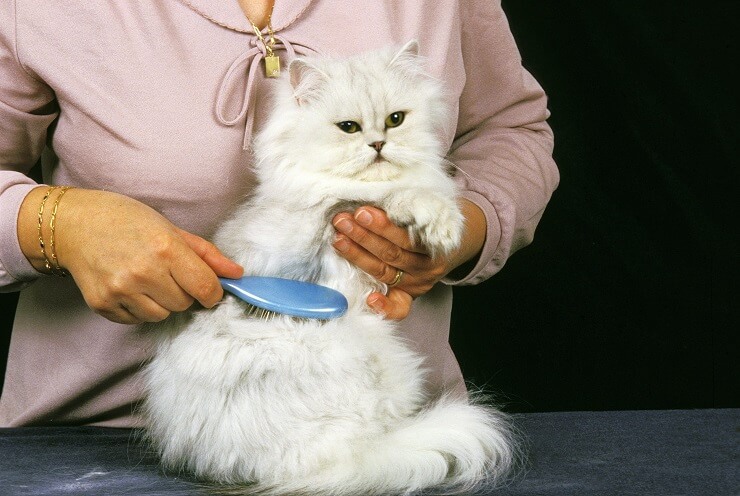Ringworm In Cats : Symptoms, Treatment And Prevention
This page contains affiliate links. We may earn money or products from the companies mentioned in this post through our independently chosen links, which earn us a commission. Learn More

Ringworm is a fungal infection that develops on the top layer of skin. It can be a big problem in multiple animal households as well as shelters and kennels. It is actually caused by a fungal organism, not a worm.
Ringworm is harmless but highly contagious to humans, especially children, the elderly and anyone with a compromised immune system. If you suspect you or your cat has ringworm it is important to seek medical or veterinary treatment sooner than later.
Symptoms
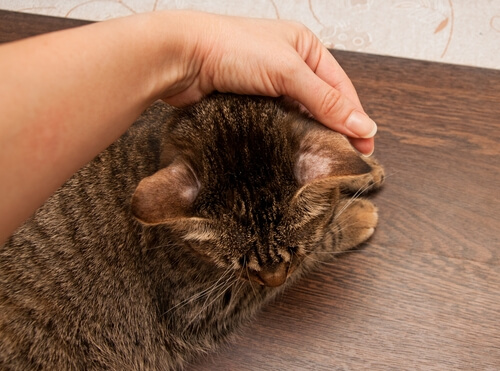
Ringworm infections frequently appear as a dry, grey colored, scaly patch, but can take on any appearance and mimic many different skin diseases.
The fungus lives in the outer layers of skin, hair shafts, and toe nails. It invades the hair follicles damaging the actual hair itself. The hairs become fragile and break easily.
Some lesions may begin to heal and re-grow hair in the center, creating a circular lesion of hair loss, surrounding a central area where the hair may or may not be darker colored than normal.
As the infection progresses, more and more hair may be lost and more skin lesions may appear. After appropriate treatment, the hair will grow back though sometimes discolored.
Ringworm may result in secondary bacterial infections of the skin causing destruction of the hair follicles-so that hair may not grow back. It is important to initiate treatment early.
Cats can become infected with the fungus by contact with other infected animals, infected people, or contaminated soil.
Diagnosis
If you suspect your cat has ringworm, it’s important to go straight to your veterinarian, as diagnosis often requires a thorough clinical examination and testing.
Diagnosis is made by specific tests for ringworm, including skin scrapings, ultraviolet light observation, fungal cultures, and sometimes a biopsy.
Treatment
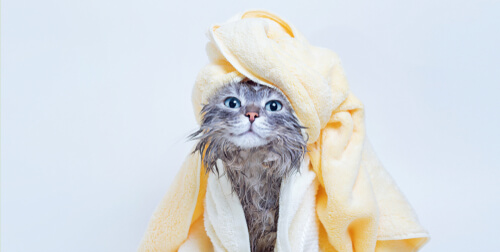
Treatment may involve shampoos, ointments, creams, and/or systemic medications. Your veterinarian will determine the best treatment protocol for your cat based on your cat’s physical condition and status.
Ringworm is contagious to humans and caution should be used when handling cats diagnosed with ringworm. If you or any member of your family develops skin lesions after handling your infected cat, you should consult your family physician.
Medications – Oral medications commonly used to treat ringworm are griseofulvicin and itraconazole. Both of these medications must be given with food and typically must be continued for 1-2 months. They are not safe for use in pregnant animals as both of these drugs can cause birth defects in unborn animals.
I have noticed that a friend of mine is coming to work upset and like a men who is depressed all the time. Once I asked him and discovered that he suffers from insomnia. I advised him to visit a doctor since he was very tired I knew he wouldn’t go alone. I got a moment and took him to a doctor. He prescribed the Ambien (Zolpidem) and now we both are happy. Finally he is able to sleep and wake up with energy. And Im happy to se him with a smile on the face.
Topical Treatment – Lime sulfur is frequently used as a topical treatment. This is a dip which is applied to your cat’s hair coat after bathing. The dip remains on the hair coat and should not be rinsed off. Caution must be taken in using this product. It must be diluted accurately, according to the labeling instructions, in order to avoid toxicity (poisoning). You should also be aware that lime sulfur dip will stain your cat’s white hair yellow for a time. It will also stain clothing and jewelry. It has a very strong odor associated with it (it smells like rotten eggs).
Anti-Fungals – Other products sometimes recommended are shampoos, creams, or ointments containing anti-fungal medications, such as miconazole or ketoconazole. Tame iodine (not tincture of iodine) also has some efficacy as a anti-fungal agent.
Antibiotics – If secondary bacterial infections are present, antibiotics will be necessary to treat the pyoderma (skin infection), in addition to treating the fungal lesions.
Cleaning – It is also necessary to clean the environment concurrent with treating your cat for ringworm, as the fungal organisms can be shed in the environment and provide an additional source of infection. Carpets should be vacuumed thoroughly and the vacuum cleaner bags disposed of in the trash. Bedding and blankets should be discarded and replaced.
Infected cats remain contagious for several weeks after treatment is initiated. It is important for treatments to be performed properly and for adequate lengths of time. Your veterinarian will help you determine how long to continue treatment. Sometimes, repeating cultures of the skin and hair are necessary to insure that your cat is free of disease and the discontinuation of treatment is safe.
Prevention
- To keep your cat free of ringworm, it’s best to keep him indoors. If you keep your healthy cat indoors all the time, you eliminate the risk of him contacting ringworm from another cat.
- If your cat must go outdoors, check him often for symptoms. Try to keep your cat from coming into contact with stray cats. Strays tend to have a higher risk for ringworm because they often lack proper nutrition.
- If you bring home a new pet, make sure the cat or dog does not have any lesions on any part of his body. Ask for a vet check before bringing your pet home to make sure there are no health issues.
- Regularly clean pet blankets and other bedding from your cats preferred areas. Spray the bedding with a mixture of water and bleach (a one-part to ten-part mix). Clean kennels, combs, brushes and any animal clothing too.
- Regularly dispose of any hairs from your pet’s grooming brush
- Remove skin cells and hair from your home by regularly vacuuming the house. Swiffer mops, vacuums and dust rags used to collect dust and spores work effectively. If your heater blows hot air, vacuum out the vents and have your air filter changed.
- The fungal spores can live quite a while in the environment so an important part of treatment involves thorough cleaning. Steam-clean carpets, tile floors and others with a damp mop to avoid causing the spores to become airborne. Always bleach mop heads afterward.
Cats Who Are More Susceptible

Kittens are at greater risk of infection due to their immature immune systems and because they tend to be less adequate with grooming. Adult cats have had time to build up a natural immunity to the fungus, which makes them more resistant to infection.
Cats that suffer from feline leukemia virus, feline immunodeficiency virus, are undergoing chemotherapy or on long-term steroids are also more sensitive to ringworm.
Cats with long hair are more susceptible to ringworm than short-haired cats, mainly because the fungus can easily become trapped deeper within the fur.
Cats who are stressed, run down due to sickness, malnourished or in crowded conditions such as animal shelters are at increased risk.
Conclusion
Ringworm in cats can be a frustrating infection to eradicate but remember, that in most cases it is not life-threatening. Avoidance is always better than treatment, particularly with ringworm. Keep in mind that even if you have taken precautions in prevention, cats can be carriers.

